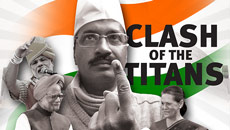An embodiment of spirit, selflessness and service, Vaisakhi is a true celebration of community.









The summer of 1947 was unlike any across the sun-baked plains of northern India. Mass communal violence had engulfed cities, and villages had gone up in flames and in some places entire populations were decimated. Millions upon millions were uprooted from their ancestral homes as an unprecedented population exchange took place.

For all of us, including children growing up in the digital age, the way we interact is changing, and even the way relationships are formed and sustained has become altered to align with the technological world.

Three prominent political leaders in India's history – Rahul Gandhi: heir to the Nehru-Gandhi dynasty; Narendra Modi: the controversial, yet popular Hindu nationalist; and Arvind Kejriwal: leader of an anti-graft group that claimed a surprise victory in state elections in India’s capital – will battle on the elections grounds in the upcoming 2014 national elections.

‘Are you seeing anyone?’ they ask. ‘When are you moving out?’ ‘No ring on your finger yet?’ ‘Do I hear the pitter-patter of little feet in the near future?’ No matter how personal or private these matters may be, it doesn’t stop curious friends, family, coworkers – and sometimes even strangers – from having an opinion on the optimal time for these life changing events to occur.

Family bonding and stimulating social playtime are imperative in the social and emotional development during early childhood years.

The season is infamous for showcasing an array of colour palettes, and designers are creating an equilibrium between pastels and vivid colours. Let us introduce your closet to the vibrant, gorgeous colours for the spring season.